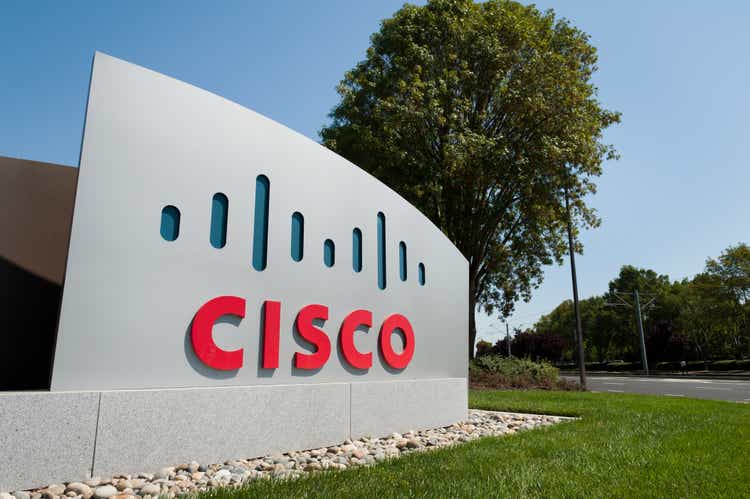raisbeckfoto/iStock Unreleased via Getty Images
As powerful and far-reaching as cloud computing efforts may be, they bring with them new challenges and create new opportunities for advancements. Chief among them is the desire to better understand how various cloud-based services are functioning and how to keep them running consistently.
Achieving this simple-sounding goal turns out to be a lot harder than most people realize, yet it’s something that organizations of all types are now constantly aiming to achieve. Part of the challenge is that modern, cloud-native applications are typically built with smaller, container-based software elements that are distributed across various network connections. This componentized, microservices-driven architecture enables them to do things like dynamically scale up and down with rapidly shifting demands, among many other useful things, but it also adds a great deal of complexity to the systems on which they operate.
At their Cisco (NASDAQ:CSCO) Live event in Las Vegas this week, the networking giant announced and demonstrated several different products, feature additions and services that are specifically intended to address these types of issues.
To start with, the company unveiled their Cloud Management for Cisco Catalyst service, which brings a simple, straightforward interface (leveraging the company’s work with their Meraki line of cloud-controlled Wi-Fi routers and other network devices) to the process of managing traditional Cisco network switches. Managing these types of devices has typically been a bit challenging to those without specialized training, but with Cloud Management for Cisco Catalyst, IT personnel will see a consistent UI across all their networking gear, making it easier for those without that training to handle the task. Given the increasing demand for IT personnel across the board, anything that can help enable a broader range of workers to tackle these types of tasks is an important step in the right direction.
Cisco also unveiled Cisco Cloud Nexus, a cloud-based network management-as-a-service offering that allows organizations to control their network infrastructure across hybrid cloud and edge computing environments, including local private networks as well as through the major cloud computing providers.
In addition to simplifying the process of managing network hardware, Cisco brought some cloud-based enhancements to their AppDynamics line of software monitoring tools. The new cloud-native AppDynamics Cloud is specifically focused not only on measuring the performance and security of cloud-native applications, but also on translating that into real-world business metrics. It achieves this by looking at a comprehensive range of application dependencies based on APIs, microservices and more that can range across everything from home-grown IT solutions to multiple cloud providers.
AppDynamics Cloud also adds the ability to ingest large amounts of telemetry data from a wide range of different sources – including major cloud computing providers such as Microsoft Azure (MSFT) and AWS (AMZN) – to give a more comprehensive view of the elements that could potentially be impacting an application’s performance. This allows companies the ability to make adjustments either to the application components or the configuration settings of the hardware infrastructure supporting it to ensure that service-level agreements (SLAs) can be met and high-quality experiences can be maintained.
Taking these concepts a step further, Cisco also leveraged the opportunity of Cisco Live to unveil the ability to use the company’s ThousandEyes Internet and cloud intelligence solution with its Webex collaboration platform. Since Cisco purchased ThousandEyes in August 2020, they’ve been working to leverage its impressive ability to visually map out network and application performance across the public internet and private networks to as many places as possible. With its most recent announcement, it’s extending those capabilities to Webex’s Control Hub management console as well. For those of us who have been on countless Webex video calls, this is bound to be a very welcome addition, as it can help IT pros to track down where and why a breakdown is occurring that’s driving a sub-par experience for (or from) certain meeting participants.
Of course, it would be great to have that capability extended to individual end-users as well, so that they may be able to troubleshoot issues they may be having, especially if they’re working from home or another remote location. While Cisco isn’t announcing that capability just yet, it does seem to be something they’re interested in. Plus, the current version of the Webex app will let end-users know if they’re having a problem with, for example, audio issues and how they might be able to address them. While that’s certainly a start, even more metrics on things like home network performance as well as audio and video quality during Webex calls would be greatly appreciated.
Speaking of Webex, the company also debuted some enhancements to the audio calling service named Webex Calling. In particular, they provided the ability to make and receive calls over traditional switched telephone networks (PSTN) in the event that a company’s data network has gone done. In addition, they’re using machine learning to enable background noise reduction even on these “traditional” calls.
Finally, leveraging the ThousandEyes technology even further, Cisco also unveiled ThousandEyes WAN Insight, which is designed to not only see where potential network and application performance challenges may be but to predict them in advance (based on past performance) and provide recommendations on how to improve performance. WAN Insights essentially extends the ThousandEyes platform and capabilities into software-defined wide area networks, while also leveraging the public internet-based data set that powers the platform’s other capabilities. This is a critical next step for networking technology and highlights how AI and machine learning are starting to have an even bigger impact in this world.
Networking technology and the components that go into are often seen as fairly obtuse topic, but given the complete network dependence that modern, cloud-based applications and services have, it’s clearly critical to be able to easily see and manage them.
Disclaimer: Some of the author’s clients are vendors in the tech industry.
Disclosure: None.
Source: Author
Editor’s Note: The summary bullets for this article were chosen by Seeking Alpha editors.


Be the first to comment